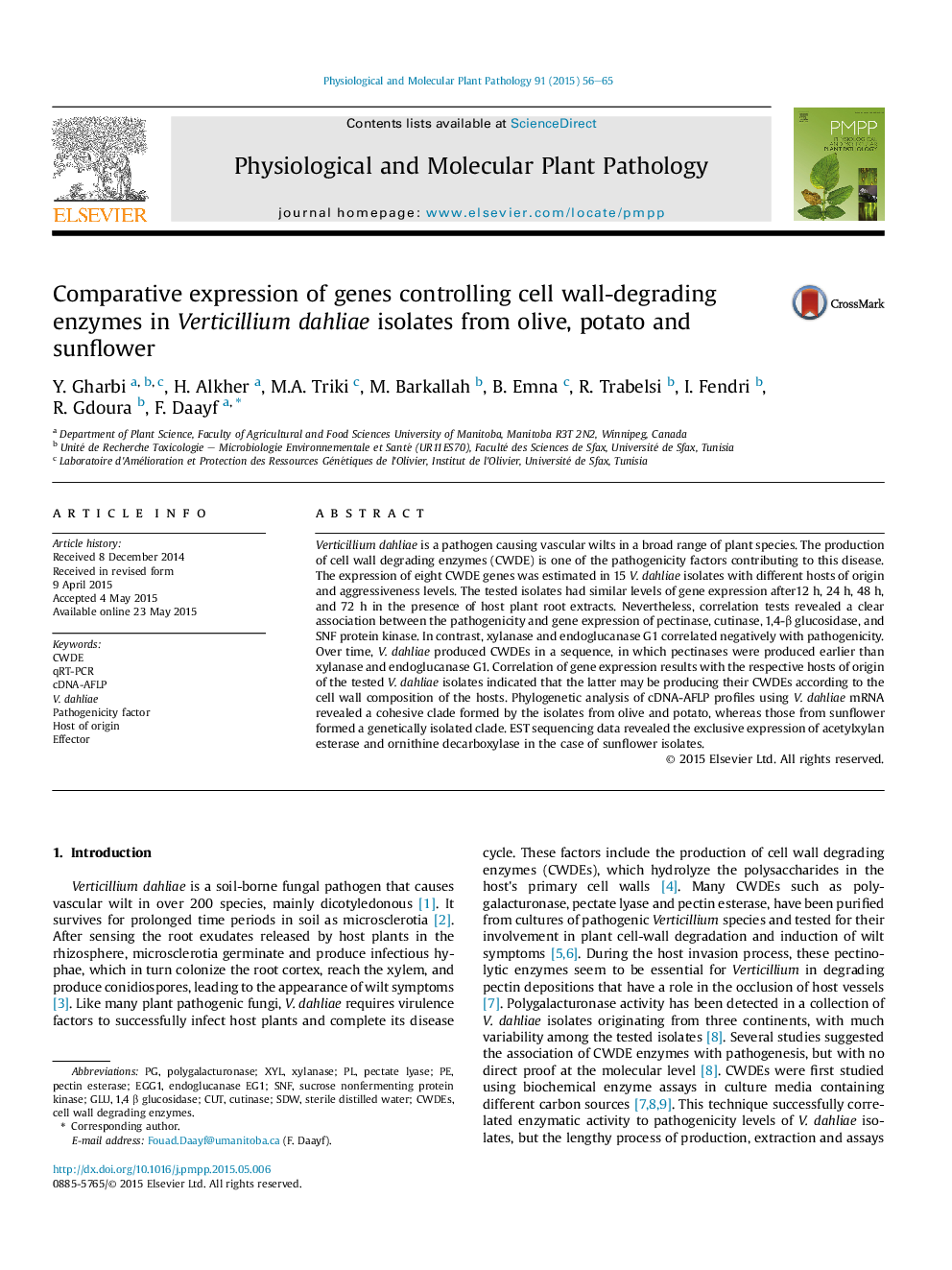| Article ID | Journal | Published Year | Pages | File Type |
|---|---|---|---|---|
| 2836263 | Physiological and Molecular Plant Pathology | 2015 | 10 Pages |
•The expression of eight CWDE genes was estimated in 15 Verticillium dahliae isolates.•V. dahliae isolates with different hosts of origin had different CWDE gene expression levels.•Gene expression of pectinase, cutinase, 1,4-β glucosidase, and SNF protein kinase varied with aggressiveness of isolates.•Over time, V. dahliae expressed CWDE genes in a sequence, with pectinases then xylanase and endoglucanase G1.•Phylogenetic analysis showed a clade with olive and potato isolates and another one with sunflower isolates.
Verticillium dahliae is a pathogen causing vascular wilts in a broad range of plant species. The production of cell wall degrading enzymes (CWDE) is one of the pathogenicity factors contributing to this disease. The expression of eight CWDE genes was estimated in 15 V. dahliae isolates with different hosts of origin and aggressiveness levels. The tested isolates had similar levels of gene expression after12 h, 24 h, 48 h, and 72 h in the presence of host plant root extracts. Nevertheless, correlation tests revealed a clear association between the pathogenicity and gene expression of pectinase, cutinase, 1,4-β glucosidase, and SNF protein kinase. In contrast, xylanase and endoglucanase G1 correlated negatively with pathogenicity. Over time, V. dahliae produced CWDEs in a sequence, in which pectinases were produced earlier than xylanase and endoglucanase G1. Correlation of gene expression results with the respective hosts of origin of the tested V. dahliae isolates indicated that the latter may be producing their CWDEs according to the cell wall composition of the hosts. Phylogenetic analysis of cDNA-AFLP profiles using V. dahliae mRNA revealed a cohesive clade formed by the isolates from olive and potato, whereas those from sunflower formed a genetically isolated clade. EST sequencing data revealed the exclusive expression of acetylxylan esterase and ornithine decarboxylase in the case of sunflower isolates.
